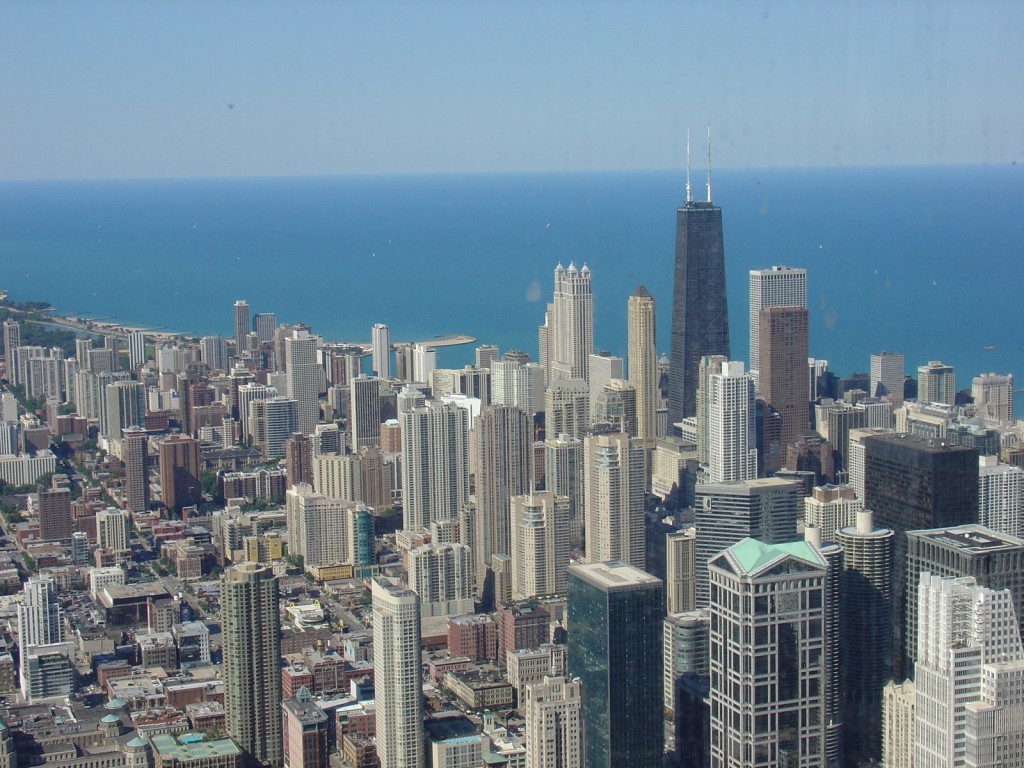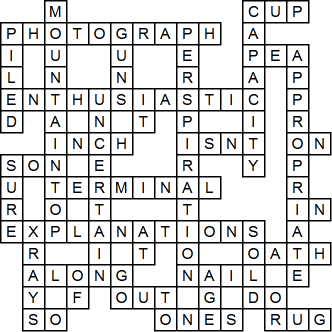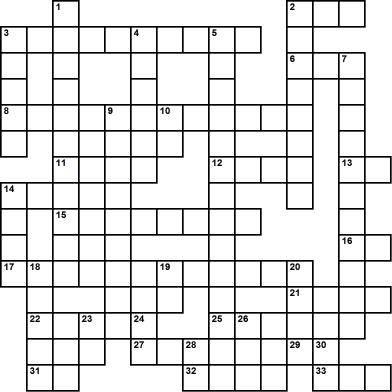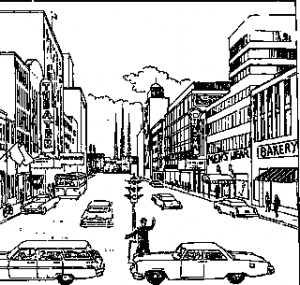1. Is this scene downtown, or in the country?
– This scene is downtown.
2. Is there a lot of traffic on the street?
– No, there is not a lot of traffic on the street.
3. How can you get around (go from one place to another) in the city?
– In the city you can get around by car, train, subway, taxi, bus, or bike.
4. Are the majority of the people in the picture riding in cars, or on bikes?
– The majority of the people in the picture are riding in cars.
5. Is the station wagon in the picture bigger than the bus?
– No, the station wagon in the picture is smaller than the bus.
6. Who is standing under the traffic light?
– A policeman (traffic cop) is standing under the traffic light (stoplight).
7. What color are the lights in a traffic light?
– The color of the lights in a traffic light are red on the top; yellow in the middle, and green on the bottom.
8. How many pedestrians are crossing in the crosswalk?
– There are no pedestrians crossing in the crosswalk.
9. Are the towers in the foreground or the background?
– The towers are in the background.
10. Where is the mailbox?
– The mailbox is on the left-hand side of the street, next to the street light on the corner by the bank.
11. Which building has two flags hanging from it?
– The bank has two flags hanging from it.
12. In front of which building is the bus stop?
– The bus stop is in front of the theater.
13. Where can you buy baked goods?
– You can buy baked goods in a bakery.
14. Which store is between the bakery and the movie theater?
– The men’s wear store is between the bakery and the movie theater.
15. Which building is across from the bakery?
– Across from the bakery is the bank.
16. What is the difference between a bookstore and a library?
– In a bookstore, people buy books to keep for themselves, but in a library, people may only borrow books and then must return them at the end of loan period.
17. Which sign is the biggest?
– The sign for the theater is the biggest.
18. Where do you buy aspirin and medicine?
– You can buy aspirin and medicine at the pharmacy (drugstore).
19. Where do the actors work?
– The actors work at the theater.
20. Where can you buy clothes?
– You can buy clothes at the department store, or at the men’s wear store.

A Visit to the “Loop”
Chicago is located in the Midwestern state of Illinois, on the southeast shores of Lake Michigan. Chicago is about the same size as Seoul (606.2 square km to 605.33 sq. km). Although its population of 2.8 million is roughly one-quarter that of Seoul’s, Chicago is the largest city in the Midwest, and the third largest city in the U.S.
Chicago is known as “the windy city.” One reason for this is because of the winds that come off the lake and cool the lakefront from the summer heat. Another reason for being called “the windy city” is because its residents had a reputation for being braggarts, and its politicians tended to be long-winded. Other nicknames for Chicago include “Second City,” “Chi-town,” “City of the Big Shoulders,” “The City that Works,” “My Kind of Town,” “Paris on the Prairie,” and “The Big Onion.”
Chicago is a thoroughly modern city. The downtown is also known as the “Loop,” because it is encircled by the “El,” or elevated trains of the city’s mass transit system. There are numerous tall buildings downtown, including several well-known ones:
1) Willis Tower. Originally called the Sears Tower and completed in 1973, this building is 442 m tall (527 m, including antennas), and is therefore the tallest structure in the U.S. Willis Tower has a “skydeck” at the top, where people can go to get a breathtaking view of the city and the lake.
2) The Aon Center (originally, the Standard Oil Building). Also completed in 1973, this building is 346 m tall, making it the second tallest building in Chicago, and the third tallest building in the U.S. (after the Empire State Building).
3) The John Hancock Center. Completed in 1969, this building is 344 m tall (457 m with antennas). In the picture above, the John Hancock is the black building with the two antennas on top. The John Hancock also has an observation deck at the top of the building, and although it is not as tall as the Sears Tower, many people say that the view from the John Hancock is nicer than that from the Sears Tower. The 95th floor hosts a restaurant, where people can enjoy the view of the city and the lake while they eat dinner.
Downtown Chicago is also home to various attractions. There is the Field Museum of Natural History (built by Marshall Field to house artifacts after Chicago’s Columbian Exposition in 1893), the Art Institute of Chicago, the Shedd Aquarium, the Adler Planetarium, the Museum of Science and Industry, the Lyric Opera of Chicago, the Chicago Symphony Orchestra, Navy Pier, and shopping on Michigan Avenue.
Several sports teams also call Chicago “home”: the Cubs (baseball), the White Sox (baseball), the Bulls (basketball), the Bears (football), the Blackhawks (ice hockey), and the Chicago Fire (soccer).
Additionally, a number of well-known institutions of higher education are found in Chicago, including: DePaul University, Illinois Institute of Art – Chicago, Illinois Institute of Technology, Loyola University, Moody Bible Institute, Northwestern University (main campus in Evanston, a suburb, with a campus north of the Loop), and the University of Chicago.
Google




